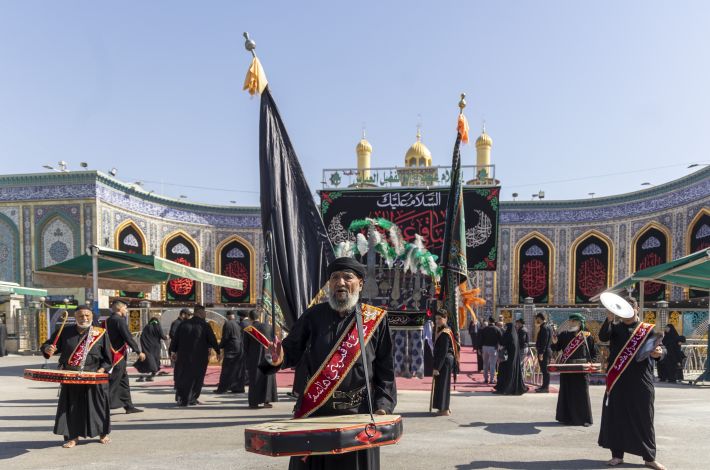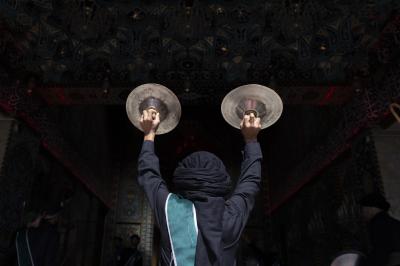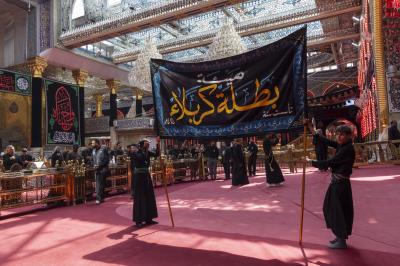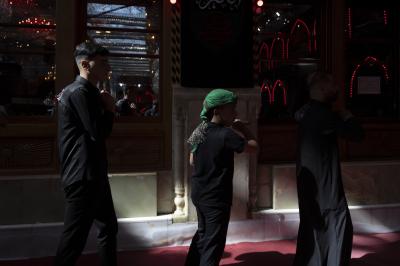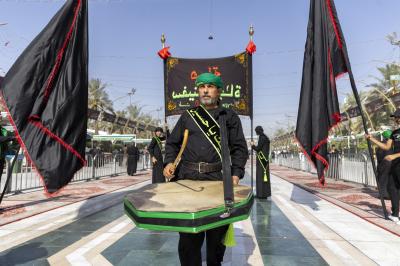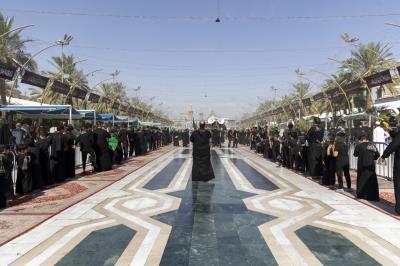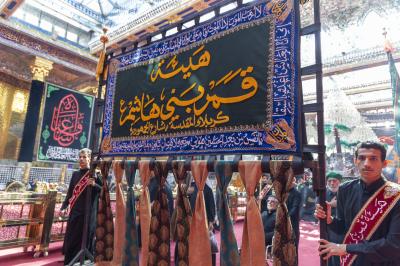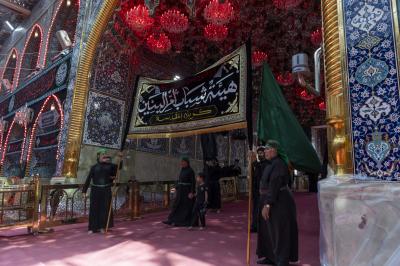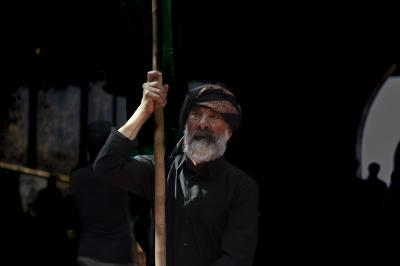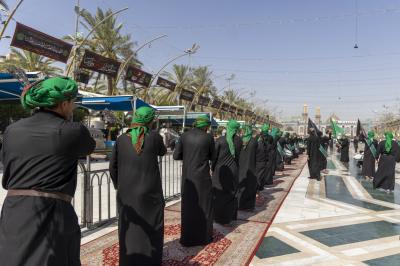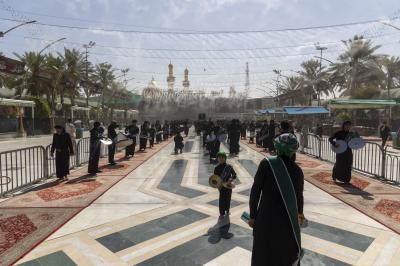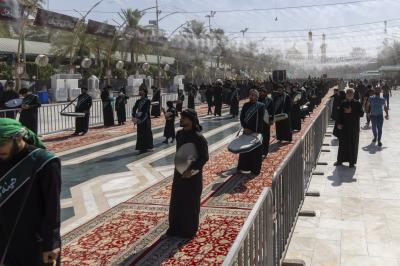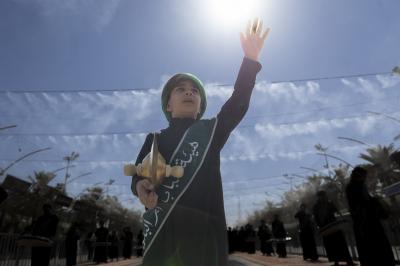The Karbala mourning processions commemorated the third day of the holy month of Muharram with mourning marches that traversed the streets of the holy city since the early hours of the morning.
The supervisor of the Ark of Salvation, Mr. Hussein Al-Ardawi, said: "The organisation participates daily in the procession of the mourning rituals (the chains Zinjeel) throughout the first nine days of the holy month of Muharram, to offer condolences to the afflicted Imam al-Hussayn (peace be upon him)."
He praised the efforts of the servants of the Al-Abbas's (p) Holy Shrine and their provision of services and facilities to ensure the smooth movement of the processions and to create suitable conditions for them.
For his part, the custodian of the Qamar Bani Hashim Association, Mr. Hassan Salman Muhammad, explained that "the mourning processions are specific to the people of Karbala during the first ten days of Muharram. Their processions are part of a mourning tradition they have been keen to uphold since ancient times, starting with the descent of the (Zinjeel) mourning processions to commemorate the tragedy of the martyrdom anniversary of Imam al-Hussayn (peace be upon him) and to renew the pledge and loyalty to him (peace be upon him)."
He affirmed: "The Al-Abbas's (p) holy shrine remains a pioneer in providing various services on all occasions, especially during this millions-visitors event."
The processions move according to an organised plan prepared by the Department of Rituals, Processions, and Hussaini Bodies. They travel along designated routes leading to the Bab al-Qibla of the shrine of Aba al-Fadl al-Abbas (peace be upon him), passing through his holy courtyard, and then continue their journey through the area between the two holy shrines to conclude their mourning at the shrine of the Master of Martyrs, Imam al-Hussayn (peace be upon him).
The Rituals Department assigns teams from its staff to accompany each procession rom the moment it departs until its conclusion. They are responsible for organising the march and preventing gatherings or overcrowding, following specific routes that ensure no intersection occurs between one procession and another or with the visitors.
